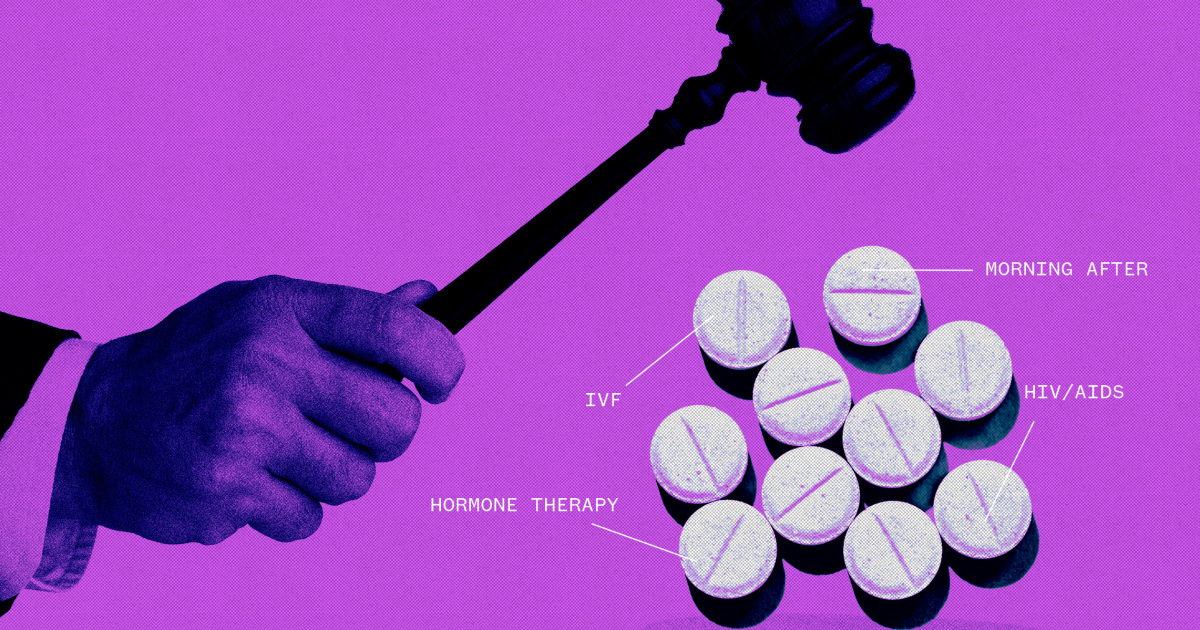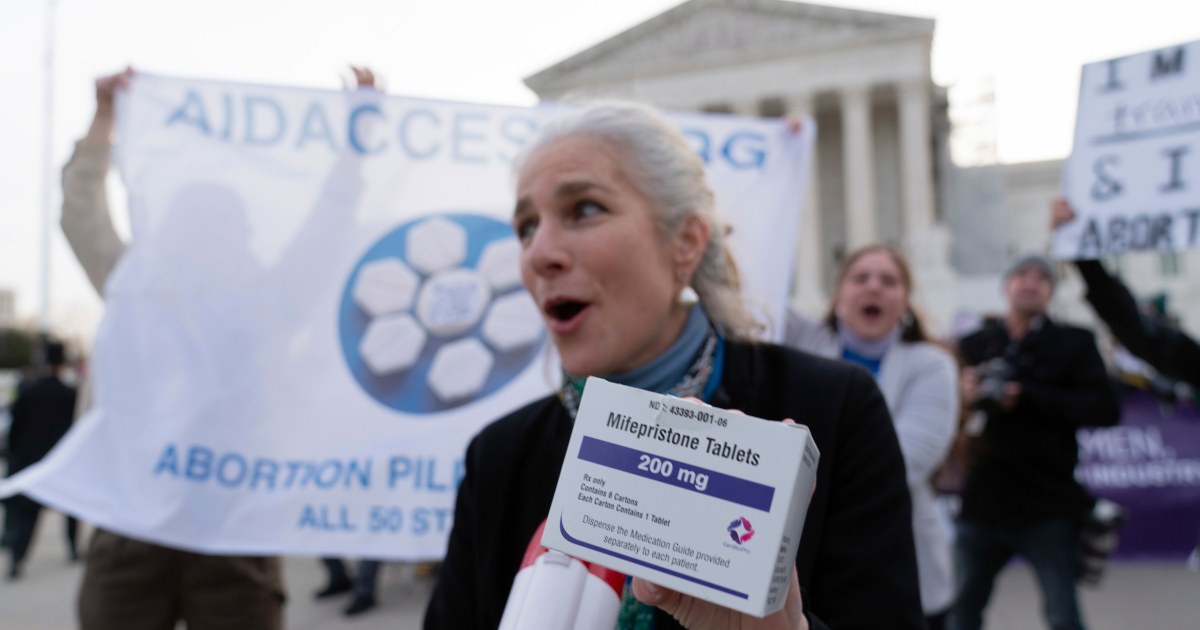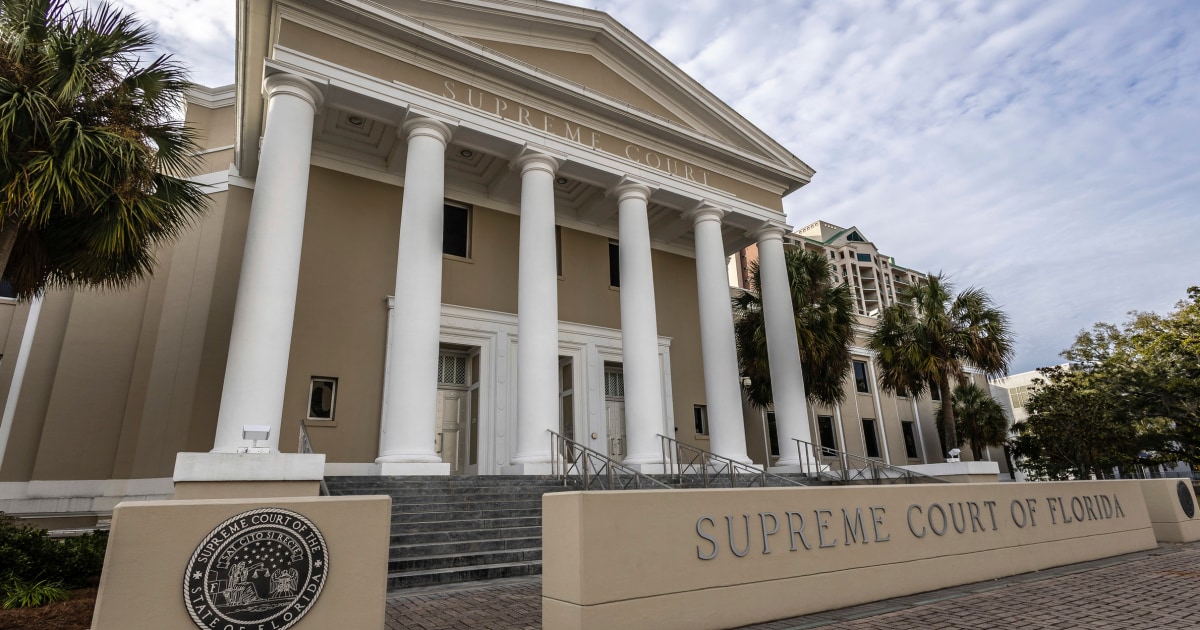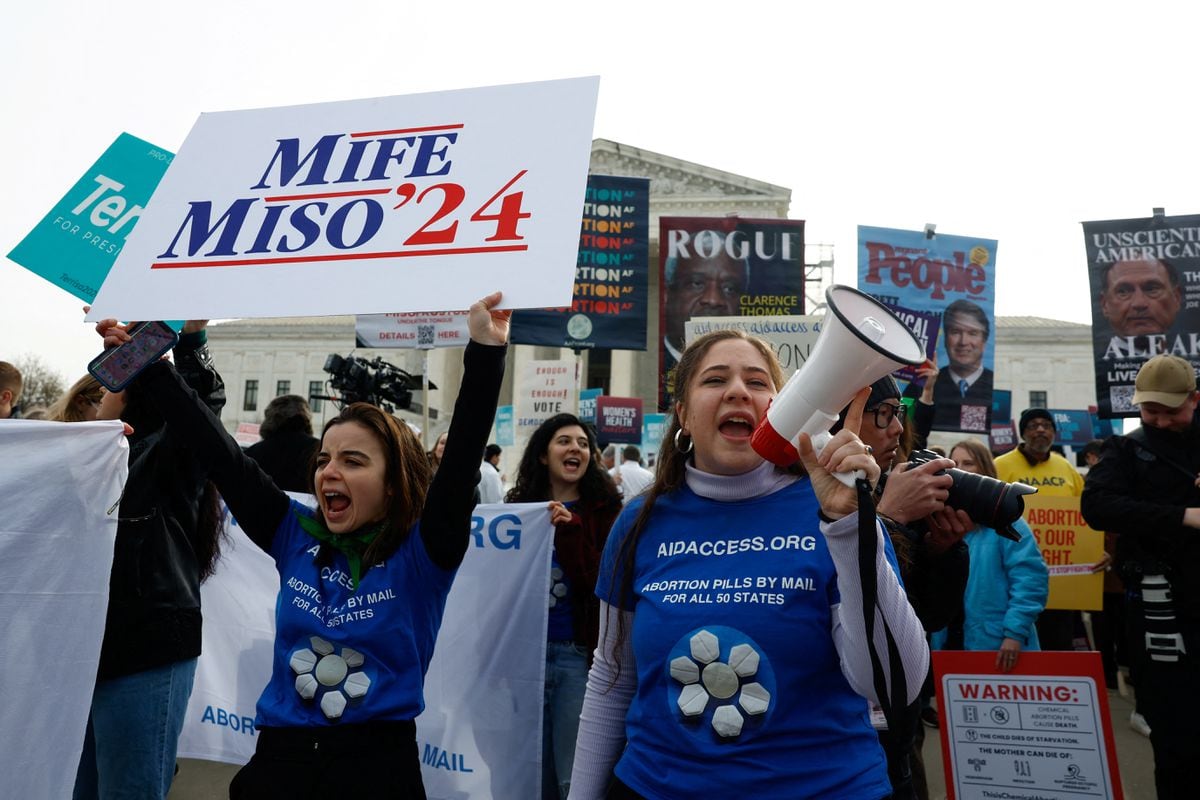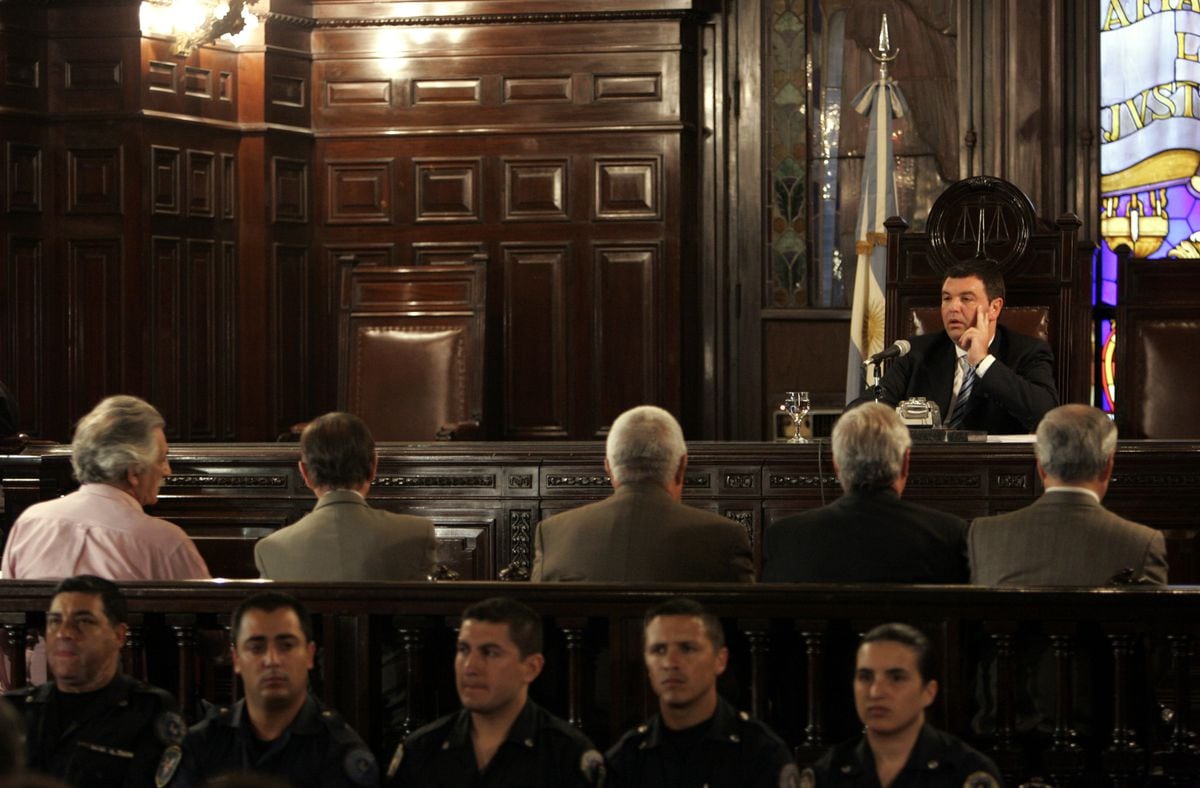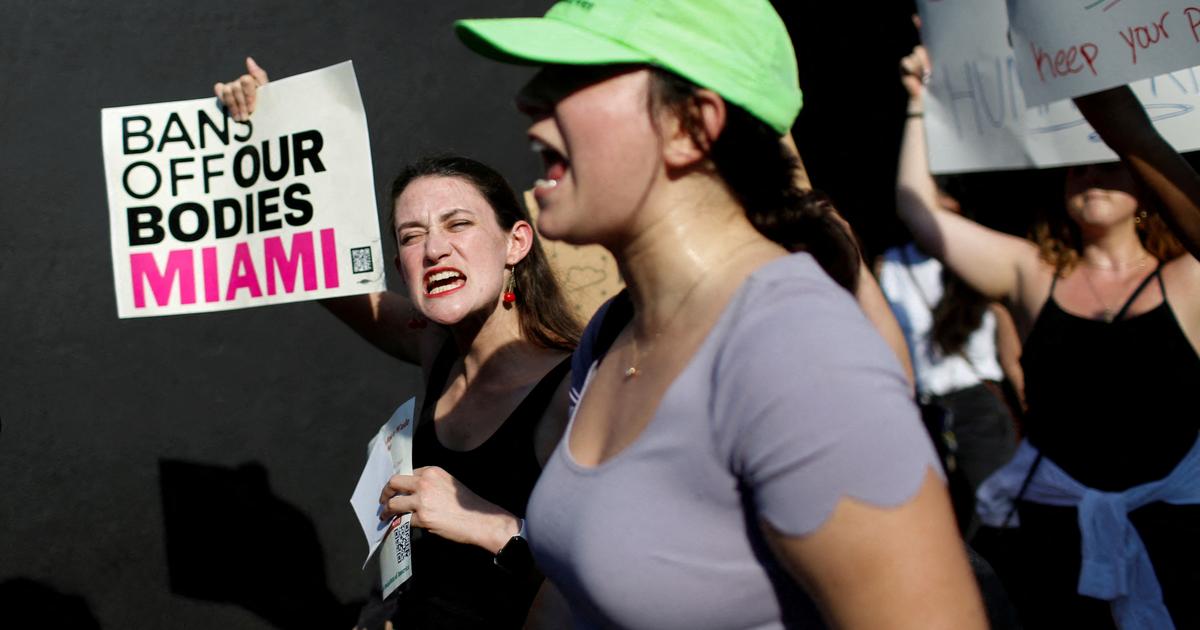USA: Supreme Court decides the future of Roe v.
Wade 0:43
(CNN) -
US Supreme Court Chief Justice John Roberts came to the abortion arguments Wednesday with an idea, an idea that probably no other Supreme Court justice would want, but that a slim majority could end up with. accepting.
With his questions during the intense session that lasted almost two hours, Roberts suggested that the high court reverse an important part of the decision in the Roe v.
Wade (
read more about the case here
) but to preserve some constitutional right to abortion.
Roberts would end the existing protection for a woman's decision to abort before viability, that is, when the fetus can survive outside the uterus at approximately 23 weeks.
Roe vs.
Wade: the case that decriminalized abortion in the United States
He suggested that it would allow states to ban abortion at 15 weeks of pregnancy, as Mississippi has done in the case before the judges, but that it would go no further to completely ban abortion.
The chief justice tactic, however, would require at least one of the other five Conservatives to join him.
Otherwise, this new Supreme Court seems set to reverse the Roe milestone entirely.
One way or another, the court is poised to step back from nearly half a century of constitutional protection.
The Supreme Court hears oral arguments on Mississippi law prohibiting abortion after 15 weeks and the future of Roe v.
Wade
The five conservatives to Roberts's right, including three appointed by former President Donald Trump, have signaled their opposition to abortion rights over the years.
Trump promised to appoint judges who would overturn the Roe case, and Neil Gorsuch, Brett Kavanaugh and Amy Coney Barrett have previously criticized decisions that give women the option to terminate a pregnancy.
Despite his record of fighting abortion rights, institutionalist Roberts showed little interest Wednesday in going further than the precise question that the justices had agreed to address: can states ban abortion before the viability of the fetus without violate the Constitution?
advertising
Abortion: Which US States Have the Most Restrictive Laws?
Together, the intense question and answer session demonstrated the new era of American women's reproductive rights. Since 1992, the court had not heard such a direct threat to the Roe case, and the current court lacks the Republican-nominated moderate judges who led the 1992 compromise decision, which supported the core of the essential position of the Roe case, which gave women the right to terminate a pregnancy before fetal viability.
Due to covid-19 restrictions, the hall scene was solemn, with few in attendance, a stark contrast to the clamor of hundreds of protesters outside.
The few dozen spectators inside - mainly journalists and paralegals - wore high-quality, tight-fitting masks and were well-spaced on the red upholstered benches in a room that typically has 300 seats.
The magistrates, all except Sonia Sotomayor did not wear a mask, they carried the weight of the moment on their faces, and their questions referred to important issues such as the autonomy of women, the life of the fetus and the institutional integrity of the court, based on respect to the precedents.
The Roe vs.
Wade of 1973 and Planned Parenthood v.
The 1992 Casey used viability as a cut-off point to determine when a state's interest in protecting the life of a fetus might exceed a woman's ability to terminate a pregnancy.
Roberts repeatedly suggested that the viability line was arbitrary and irrelevant to the fundamental sentences of Roe and Casey, something contradicted by attorneys challenging Mississippi law.
At the same time, Roberts was open to maintaining some right of women to terminate a pregnancy at an early stage.
Three justices to his left, Stephen Breyer, Sotomayor and Elena Kagan, want to preserve the full breadth of Roe v.
Wade and Planned Parenthood vs.
Casey.
They noted that for more than half a century, women have relied on these rulings, which are woven into the American legal and social fabric, and that reversing any part of them would compromise the high court's customary adherence to precedents.
But it is unlikely that the votes of the minority made up of those three liberal magistrates will determine the resolution of this controversy, which may be decisive.
USA: Supreme Court decides the future of Roe v.
Wade 0:43
Will a magistrate agree?
Trump appointees Gorsuch and Kavanaugh seem inclined to drop Roe v.
Wade.
Barrett, perhaps less so, can be concluded from your questions.
Gorsuch responded to Roberts's strategy skeptically, questioning whether, if the cut-off line for viability dissolves, judges could ever set a new "viable standard."
Of the other two conservatives on the court, Clarence Thomas strongly questioned the validity of the Roe case, but Samuel Alito was not so clear.
Alito seems like a final vote to uphold the 15-week ban in Mississippi, but may be looking to postpone a final judgment on the Roe case.
ANALYSIS |
Eyes on Roberts, Kavanaugh, and Barrett as US Supreme Court Considers Texas Abortion Ban
It seems that, if any abortion rights arise from this case, it will be through Roberts' votes with the three Liberals (who nonetheless would disagree with keeping the Mississippi law), and a fifth vote by Alito or one of the three. appointed by Trump.
As a lawyer during the Ronald Reagan and George HW Bush administrations, Roberts opposed the Roe case and even urged the Supreme Court to overturn it.
But since taking office, he has taken a more cautious stance.
Roberts has voted in favor of abortion regulation, but, in a dispute in Louisiana in 2020, he cast a vote to lift a restriction on doctors who perform abortions, building on a 2016 precedent with which he disagreed.
As president and as a judge close to the ideological center of the court, he has tried to prevent it from shifting too far to the right.
Roberts has raised concerns about the public's attitude toward the court and the potential for political contamination.
Sotomayor addressed that possibility in harsh terms Wednesday.
He referred to comments from backers of the Mississippi abortion ban that suggested they believed that the court, with its new magistrates and established conservatism, would welcome the ban.
"Will this institution survive the stench that this creates in the public perception that the Constitution and its reading are mere political acts?" He asked, adding: "I don't see how this is possible."
His fellow liberals Breyer and Kagan emphasized the court's customary regard for precedent, especially when, as in this situation, the court seriously reconsidered the validity of the Roe case and upheld it in 1992.
"Normally there has to be a justification, a strong justification, in a case like this, beyond the fact that the case is thought to be wrong," Kagan said.
"And I guess what strikes me when I look at this case is that, you know, not much has changed since Roe and Casey, that people think it's right or wrong based on the things that they've always thought it was about. right or wrong ".
From the other side of the ideological divide, Kavanaugh has expressed interest in referring the issue to state legislators, which would spell the end of any constitutional right to abortion.
In one of the questions, he preferred to say that "the Constitution is not on the side of those who condemn abortion, nor in favor of the choice on the issue of abortion, but leaves the issue for the people of the states or perhaps the Congress resolve it in the democratic process. "
A Texas woman lost her life years ago to an unsafe abortion.
Your daughter fears the same thing will happen again
Is a shorter legal feasibility standard feasible?
When the court first established the right to abortion in 1973, it based it on the due process clause of the 14th Amendment, which protects the right to privacy.
Roe vs.
Wade: the case that decriminalized abortion in the United States
The judges in the Roe case recognized that the Constitution does not contain any explicit reference to a right to privacy, but said that in a line of decisions dating back to the late 19th century, "the Court recognized that a right to personal privacy , or a guarantee of certain areas or zones of privacy, exists under the Constitution. "
The Roe court said the right extends to activities related to marriage, contraception and parenting, and "is broad enough to encompass a woman's decision to terminate her pregnancy or not."
Oral arguments on abortion before the Supreme Court of the United States on December 1.
As Roberts moved toward a position that would undermine but not eliminate that right, she asked Julie Rikelman, a representative for the Jackson Women's Health Organization, if her idea was viable.
"If you believe that the issue is one of choice, that women should have the option to terminate their pregnancy, that assumes that there is a point where they have had the right choice ... and why would 15 weeks be an inappropriate line ? "asked the president of the court.
Roberts added that he did not see how the viability limit had "something to do with choice."
Rikelman replied that, from a practical point of view, some women, those in "the most difficult circumstances" in the later stages of their pregnancy, would not be able to obtain the necessary medical attention.
Rikelman said that any alternative standard would be "less exemplary and feasible than feasibility."
He also cautioned that states are likely to cut it down to fewer weeks, as happened in Texas, which has an abortion ban after about six weeks.
The Supreme Court has allowed that ban to be upheld while it evaluates the merits of the law's procedures.
What is the abortion ban in Texas about and why is it important?
In 1973, the court tried to balance the interests of the woman with those of the fetus and chose viability as the limit, as it said at the time, "because the fetus then presumably has the capacity for a meaningful life outside of the mother's womb."
The state regulation that protects the life of the fetus after viability therefore has both logical and biological justifications. "
Barrett asked if women who are unable to abort would face the possibility of placing a child for adoption or giving up parental rights under state law.
Why don't those options "take care of that problem"?
Barrett asked.
"It seems to me that it focuses the burden much more narrowly. There is, without a doubt, an infringement of bodily autonomy, which we have in other contexts, such as vaccines. However, it does not seem to me that pregnancy and later parenthood are part of it. of the same load ".
Rikelman stressed that the right to abortion encompasses "bodily integrity", as well as "autonomy of decision and, specifically, decisions regarding motherhood, marriage and procreation."
Pregnancy, Rikelman said, "places unique physical demands and risks on women and actually impacts their entire lives, their ability to care for other children, other family members, their ability to work." .
Concern about Texas anti-abortion law in the Supreme Court 3:27
Alito tried to poke holes in the justification for the viability limit.
In previous cases, he has tried to limit reproductive rights and could be inclined towards the complete revocation of the Roe case.
But during Wednesday's session, he sounded like he was fighting, like Roberts, for an option that wasn't as final as those on the far right or left seek, for or against the Roe case.
At one point, Alito asked if "the only real options we have is to reaffirm Roe and Casey as they are or to nullify them entirely."
If he or any other judge joined Roberts in some compromise attempt, the result would continue to stop abortion rights as it exists today.
The question would then be: what does the future hold?
Abortion US Supreme Court


